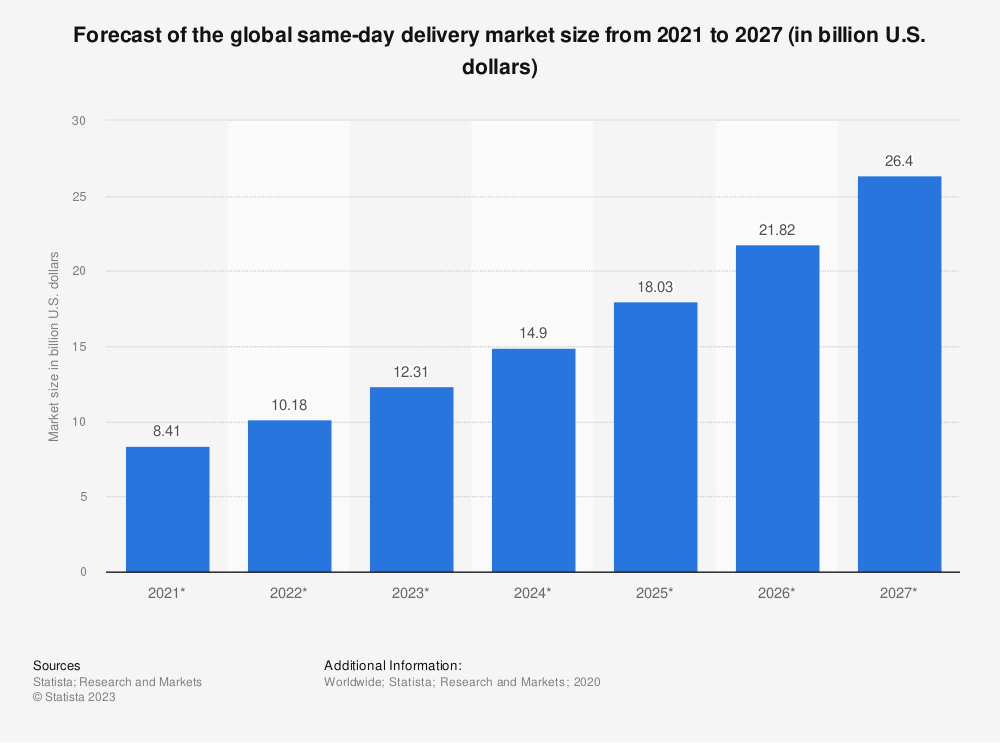21 Ecommerce Trends to Get Ahead in 2024 and Beyond

The ecommerce industry is constantly evolving.
Today, customers can shop anywhere, at any time. The brands serving them need to exceed expectations if they’re to stand any chance of demanding their attention.
Ecommerce trends help you get ahead in a competitive space. They are like a time machine, helping us understand what people find important and meeting those expectations before other brands do.
So, what’s trending right now? In this guide, we’ll explore all the trending things in ecommerce as we head into the holiday season and 2024.
That includes ecommerce trends in:
Top ecommerce trends in technology and innovation
If there’s one area of ecommerce that’s undergone rapid change in the past year, it’s technology. Let’s explore the biggest trends in ecommerce technology and innovation.
Generative AI for text, videos, and photography
Generative AI is a type of AI that can create various forms of media. These include text, videos, and photos. It does this by learning from a simple prompt.
It’s never been more accessible for ecommerce brands to use AI thanks to Shopify AI and the following Shogun features:
- AI Text: Use AI to generate copy for product titles, descriptions, and blog content with this feature inside Shogun Page Builder.
- AI SEO: Write page titles and meta descriptions with this SEO AI tool.
- AI Designer: Create new page sections by describing what content you want to create—no designing or coding necessary.
One brand already using this ecommerce trend is Custom Neon. Its Chief Technical Officer, Matt Aird, says: “We’ve been utilizing generative AI to improve customer engagement with our brand and products, as well as to speed up operations.
“Generative AI allows us to now more quickly create an array of future design possibilities, significantly supporting our design team in bringing items to market faster,” Matt says.
“In a workplace where loading times, innovation, and creativity are out of necessity married—to stay ahead of our many competitors—any speed boost to design phases is essential.”
“While the initial setup does come with its costs, both monetary and training time, the efficiencies gained are definitely worth it. Especially since this tech can work around the clock, allowing for a productivity increase that doesn’t require additional resources, like overtime.”
—Matt Aird, CTO at Custom Neon
#cta-visual-pb#<cta-title>Build your ecommerce store with AI<cta-title>Design the store of your dreams without writing a line of code with Shogun Page Builder.Get started for free
Customers use augmented reality for shopping decisions
Augmented reality (AR) is a type of technology that allows people to see digital things in the real world. Digital images are laid over a camera feed to give the illusion of seeing an online product in real life.
This type of virtual reality is no longer reserved for gamers.
Around 16% of US shoppers think AR is important when buying things. This number will likely go up as technology improves and AR becomes easier to use for online businesses.
IKEA is one brand already leaning into this ecommerce trend. It launched IKEA Place, an app which customers can use to show IKEA products in their own home.
The IKEA app solves several problems a customer might have before purchasing—notably, whether the product would fit within their existing interior. Any pre-purchase friction is resolved. They can confirm it’d look good and buy directly through the app.

Source: IKEA
Predictive analytics prevent stockouts
The entire supply chain industry is in crisis and it’s negatively impacting 68% of retailers’ ability to fulfill customer demand.
As a result, we’re seeing more stock outs than ever before. It’s paving the way for brands to swoop in and steal your customers—46% of consumers move to competitors who have the products they want in stock.
Stock outs are notoriously difficult to prevent. You need a strong grasp of consumer demand and enough stock to continue selling throughout disruption. (The last thing we all want is another global pandemic that halts production and leaves inventory tied up in another country for an unspecified period.)
However, predictive analytics uses machine learning to forecast future demand. It relies on a variety of data sources to do so, including:
- Market and economic trends
- Social media conversations
- Internal data (such as previous ecommerce sales)
- Holiday seasons
- Weather
Customer experience trends for online shopping
The experience an online shopper has with your store can make or break your conversion rate. Here are the biggest customer experience trends to consider as we head into 2024.
Personalized shopping experiences
Online stores that connect with customers on a deeper level are rewarded with loyalty and greater retention.
It’s another instance of how AI can improve customer relationships.
Aplós’ co-founder Emily Onkey thinks “Embracing AI-driven CRM insights is the key to both deepening those long-term relationships and improving the bottom line.
“Just imagine customizing each shopping experience, offering irresistible loyalty perks, and delivering top-notch customer service,” Emily says. “This will create loyal customers who will keep coming back and recommend your brand to others. And all guided by AI’s invaluable insights.”
So, what do those AI insights look like? Brands can use the following touchpoints to personalize the shopping experience:
- Previously ordered products
- Time since last order
- Average order value
- Pain point or challenge
- Purchase motivation
Emily concludes: “This approach not only nurtures lasting connections, but it’s also a strategic way of using resources to acquire leads.”
Customers lean on interactive self-service
How much time have your customer support agents spent hand-holding potential customers through their purchase?
If there are no self-service options, it may take a lot of time and discourage visitors from buying. They would have to contact support instead.
“Part of remaining a successful ecommerce business in the near future is letting your customer take over the reins of their customer journey,” says Erin Banta, co-founder of Pepper. “Offering an interactive experience where your customers can fine-tune that journey.”
Erin says the brand puts this into practice with a range of free resources—including a wallpaper and curtain calculator, paint guides, pillow guides, and style guides.
“This allows our customers to take their experience into their own hands and tailor their customer journey to their precise needs, with our business there to sign, seal and deliver,” Erin says.

Trends in global ecommerce shipping and fulfillment
From shipping to fulfillment, here are the biggest ecommerce logistics trends to consider this year.
Same-day delivery expectations
First it was two-day delivery. Then it was next-day. Now, same-day delivery is the latest ecommerce trend that consumers are expecting from brands.
Almost half of shoppers say that same-day delivery makes them more likely to shop online. It’s a trend contributing to a same-day delivery market that’s forecast to be worth $14.9 billion in 2024, according to Statista.
Ecommerce companies must create systems for same-day delivery to keep their success and customers. Otherwise, they’ll risk losing their buyers to more forward-thinking competitors. Many are already feeling the blow.”
—Michael Nemeroff, CEO and co-founder of Rush Order Tees

“Consumers love the ease of online shopping, but they want their products as soon as possible,” says Christy Pyrz, chief marketing officer at Paradigm Peptides.
“With companies such as Uber Eats, DoorDash, and Instacart making on-demand shopping commonplace, ecommerce brands will start to follow suit. Fortunately, it won’t have to hurt their sustainability initiatives since many businesses are already using carbon-neutral couriers.”
Forward deploy fulfillment centers
Speaking of delivery expectations, online businesses need to configure their fulfillment strategy with same-day delivery in mind.
Forward deploy fulfillment centers are a relatively new trend that distributes your inventory across several smaller hubs, rather than one large warehouse. The closer products are kept closer to a customer, the faster they can receive it.
Don’t rule out this optimization if budget is the limiting factor in opening mini fulfillment centers. You could still capitalize on this ecommerce trend by:
- Working with a third-party logistics provider (3PL)
- Using your physical store as distribution centers
Automated returns management
Studies estimate that between 20% and 30% of all online-bought items are later returned.
Many ecommerce merchants find returns inconvenient, but an automated returns management system can make the process easier.
Gaurav Saran, CEO of ReverseLogix, explains: “The RMS uses algorithms to quickly assess product condition, potential resale probability, resale price, storage location, seasonal trends, etc., to get product returns that have the highest possible recovery rate processed as quickly as possible.
“By simply scanning a product, AI disposition engines can leverage existing data and insights around a product to determine the best path for the return, including the return to vendor, secondary marketplace listing, refurbishment, liquidation, parts harvesting, and recycling.”
Sustainable options reign supreme
Studies show that 78% of US consumers consider a sustainable lifestyle as important to them. This is expressed through their shopping habits:
- 60% of shoppers would pay more for a product with sustainable packaging
- 42% of shoppers buy eco-friendly products “very often” or “always”
- 28% of shoppers think about the environmental impact of delivery options when buying from the internet
Dani Mechlowitz, founder and managing director of Delta Fulfilment, says: “In 2024, I think we will see more ecommerce brands lean into sustainability, such as going paper-free, using recyclable or biodegradable packaging and offering “nearly perfect” versions of products at a discounted rate.
“For eco-conscious business owners, this is an opportunity to reduce their own carbon footprint. For marketing-savvy business owners, this is an opportunity to provide USPs to set them apart from their competitors.
Dani continues: “In a time where we’re inundated with small to medium sized ecommerce businesses selling similar products, customers are looking for reasons why they should choose one business over another.”
#cta-mini-pb#Ready to take your ecommerce website to the next level? Start designing for free now
Ecommerce privacy and security trends
From browsers limiting cookies to fraud detection, here are the biggest ecommerce industry trends in the realm of online privacy and security.
Lean on first-party data collection
It’s no secret that online shoppers are becoming increasingly aware of the data brands collect on them. That, combined with browsers like Google killing third-party cookies, is paving the way for brands to favor first-party data.
Customers willingly volunteer first-party data. It’s data you own—oftentimes information a person has submitted through a quiz, form, or questionnaire—and can use for personalized marketing campaigns.
Take Jones Road Beauty, for example. The cosmetics retailer put together a “Find Your Shade” quiz that collects the following pieces of first-party data:
- Skin tone
- Skin concerns
- Skin type
The retailer then curates a list of product recommendations related to this data. They also collect the quizzer’s email address for future retargeting.

Be transparent about customer data usage
One study found that just one third of people believe brands use their data responsibly. Three quarters of online shoppers are aware that companies sell their data to third parties—up from 62% in 2020.
Regardless of what you’re collecting data for, you need to be transparent about how you’re using it.
If using quizzes to collect data, for example, it is important to include a brief message on the last slide. This message should explain how the data will be used. A brief message assuring that their data won’t be sold can give people the confidence to provide their email.

Wicked Edge adds the following line: “We’ll never sell your info and don’t spam with tons of marketing emails.”
Use AI fraud protection
With most transactions happening online, there’s a huge opportunity for scammers to target online businesses and commit fraud. Online retailers lost an estimated $48 billion to ecommerce fraud last year.
Fraud prevention software can help you solve these problems. Platforms like NoFraud and SEON use artificial intelligence to:
- See whether the debit or credit card has been reported as lost or stolen
- Confirm if the shipping and billing addresses match
- Determine whether the IP address for a customer profile is consistent
Marketing and advertising trends for digital commerce
The marketing playbook you’ve been using for years won’t suffice in 2024. Consumers expect more meaningful messages from brands they engage with, resulting in these ecommerce marketing trends.
Community-based marketing campaigns
Competitors might be able to beat you on price or even product quality.
But nothing beats a loyal community of people who love your brand and what it stands for.
Community-based marketing is a new ecommerce trend that uses a brand’s audience as the foundation for its marketing efforts. These communities can take place across:
- Social media groups (such as Facebook Groups)
- Instant messaging apps like Slack
- An email marketing newsletter
- In-person events and meetups
Conversations in this group not only inspire campaigns, but can help you expand your reach.
“Hey, this brand has a group of people talking about a topic we both care about” is a much more interesting proposition than “Hey, this brand is selling something.”
“We expect to see a lot of advertising platform diversification. We see a wide range of D2C brands diversifying their ad spend into more unique channels sooner—newspaper, direct mail, relevant newsletters, alternative social media apps, etc.”
—RC Williams, co-founder of 1-800-D2C
Creator-led products or collections
STikTok and other social media let people become influencers, even without many followers.The quality of content they produce is more important than their audience.
But there’s more to working with creators than simulating user-generated content that you can repost to your own social media accounts.
Paige Arnof-Fenn, founder and CEO of Mavens & Moguls, recommends creating collaborative products with creators: “Content, products or designs that are co-created by the brand and influencers from the very beginning will thrive in 2024.”
However, Paige notes: “It should not feel like a paid opportunity, slapping on the #ad to a post. You want them to have freedom to make their own content, but also make sure it still communicates the message.
Brands’ ethics come into play
Speaking of community, brands that’ll win in 2024 have strong emotional ties to their audience. Part of that includes sharing the same values.
A report by Sprout Social found:
- 72% of people want brands to be positive contributors to society
- 64% of people want brands to use their power to help people
- 48% of people want brands to raise moral standards for others
It’s no longer enough to say you’re doing the right thing. Modern consumers—especially Gen Z and Millennial buyers—want evidence after an onslaught of brands were caught “greenwashing” their audience.
LUSH Cosmetics is one brand that’s leaning into this ecommerce trend. It stands against animal testing, all of its products are vegetarian, and all store owners are expected to campaign at least once per year in support of their core values.

Ecommerce trends for payments and financing
As the old saying goes, “Money makes the world go round.” Here are the biggest ecommerce payment trends to help you increase business revenue.
#cta-visual-pb#<cta-title>See these data-driven DTC shopping trends<cta-title>Get access to our original research report featuring recommendations for ecommerce growth.Download the report
Inflation is a major obstacle in purchase decisions
Inflation is affecting everything from manufacturing processes to the cost of accepting multiple payment methods.
Shopify found that as a direct result of inflation, 81% of brands have plans to increase product prices. This is impacting customers’ ability to pay for non-essential goods—products they no longer have enough disposable income to splurge on.

That’s not to say price has to be the competing factor that rules your business over the coming year. Just bear in mind that if you’re selling non-essential goods, some people will disqualify themselves from making a purchase—even if they have purchased prior.
That said, you could still reach these people by experimenting with:
- Bundles that make several products cheaper when bought together
- Miniature versions of your best selling products
- Discounts for loyal customers to continue buying
Retailers secure financing
Inflation isn’t only impacting customers’ ability to buy products online. With the cost of goods skyrocketing, many retailers are turning towards financing to power them through.
One third of brands are concerned about rising interest rates.
Ecommerce platform Shopify is one provider supporting merchants. Shopify Capital allows merchants to secure funds for their business without giving away any equity. Repayments are automatically deducted as a percentage of your daily sales.
It’s already helped retailers secure $4.5 billion in funding—without forcing them to fall mercy to rising interest rates.
Customers Buy with Prime
Amazon’s stronghold on ecommerce isn’t set to weaken as we head into 2024. If anything, it’s getting stronger.
The marketplace recently launched a Buy With Prime button—a payment option that allows online shoppers to use their Amazon login to purchase products from retailers’ direct-to-consumer websites.
NThis skips the checkout or registration process when shopping on a new website. Prime members get fast, free delivery promise they rely on Amazon for.
Amazon reports this single widget can increase conversion rates by 25% on average, and that new shoppers account for three in every four Buy With Prime orders. Even if the marketplace doesn’t form part of your omnichannel strategy, it’s worth experimenting with.

Colsen Fire Pits uses a “Buy with Prime” sticker to entice new customers to buy.
Customer behavior retail trends
Businesses that make it easy for people to buy ultimately win more customers. Let’s explore customer behavior trends that allow you to sell more effectively.
Shopping remains mobile
Just under a third of internet users buy something online using their smartphone each week. This contributes to a mobile commerce market worth $127.5 billion—up from just $52.1 billion at the start of in 2020.
To meet mobile shoppers on the devices they’re using, you need a shopping experience suitable for mobile devices. That means:
- Using a mobile-first design, instead of just responsive
- Accepting mobile payments or digital wallets, such as Apple Pay or PayPal
- Allowing social media login instead of forcing people to create a new account at checkout
Live shopping continues to dominate
Live shopping took the world by storm last year.
Social media platforms like TikTok led the way, racking up billions of views and generating millions for brands hosting their own live streams.
Marketer Nicole Carrington says: “From an audience standpoint, not only is there the convenience of accessing a livestream from virtually anywhere, but the live shopping format is also entertaining and interactive.
“You connect directly with the shopper-slash-host, see the movement and fabrication of the garment, engage in conversation and have your questions answered in real-time—all elements of the in-store experience but with the convenience of being on the go.”

Moriarty’s Gem Art, for example, hosts YouTube live videos—something marketing manager Jeff Moriarty says “quickly became very popular. Now we get over 2,500 people watching our live show each month.”
Jeff adds: “Live shows now generate 20% of our monthly revenue and it continues to climb. We are investing more money into production as we plan on switching to a weekly show in 2024.”
Omnichannel is the new normal
There’s been a huge push for online businesses to sell directly to the consumer.
Granted, the DTC business model has its advantages. You keep all the revenue you make and have ultimate control over how your products are shown. But DTC-only no longer meets customer expectations.
More than seven out of 10 like the convenience of instantly purchasing products where they’re browsing.
Ecommerce sites that will win in 2024 will make it easy for people to buy through:
- Their DTC website
- Social commerce
- Marketplaces
- Voice assistants
- Brick-and-mortar stores
Ecommerce platforms like Shopify are making it easier to meet the needs of modern customers. Whatever channel you choose to sell through, you can bet that there’s a Shopify app to help you do it—without uploading inventory data to a new platform.
The future of ecommerce lies in these trends
The only way to remain competitive in today’s ecommerce landscape is to anticipate what your customers need and deliver it before another brand does.
Use these ecommerce trends to get a headstart on your 2024 strategy. With Shogun Page Builder, you can use generative AI and target the mobile shopping industry for all your needs.
#cta-visual-pb#<cta-title>Build a better store<cta-title>Make your store look and feel as unique as your brand by customizing with the best page builder for Shopify. Start building for free

Elise Dopson
Elise Dopson is a freelance writer for B2B commerce and martech companies. When she's not writing, you'll find her in the Peak Freelance community or on Twitter.



